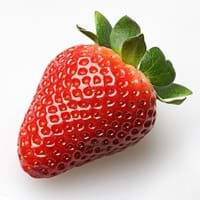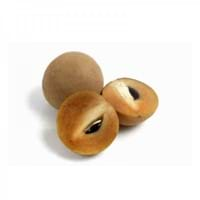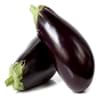Health Benefits
Anti depressant, Asthma treatment, Cancer prevention, Heart care, Improves stomach health, Increases metabolic rate, Prevents constipation
Anti-inflammatory properties, Arthritis treatment, Regulates Blood Sugar, Unknown
General Benefits
Anti-inflammatory properties, Boosts immune system, Controls blood pressure, Eye care, Maintains healthy cholesterol level, Strengthens bones
Boosts immune system, Controls blood sugar levels, Digestive aid
Skin Benefits
Anti-aging benefits, Brightens and lightens complexion, Skin cleansing, Treatment of acne, Treatment of skin diseases
Nourishes skin, Protects skin from oxidative stress
Hair Benefits
Promotes longer and healthier hair, Shiny hair, Treatment of dandruff
Prevents hair loss, Promotes longer and healthier hair, Regulates hair growth
Allergy Symptoms
Chest pains, Eczema, Hives inside the cheeks, Itching, Skin rash, Swelling, Watery eyes
Asthma, Red rash, Swelling of mouth, tongue or lips
Side Effects
Allergic reaction
Diarrhoea, Vomiting
Best Time to Eat
As a snack in the late afternoon, Don't consume at night and before bed, Don't eat after meal, Morning time (before lunch), Strictly avoid empty stomach
As a snack in the late afternoon
Vitamin B5 (Pantothenic Acid)
Vitamin C (Ascorbic Acid)
Vitamin E (Tocopherole)
Not Available
Vitamin K (Phyllochinone)
Not Available
Lutein+Zeaxanthin
Not Available
Phytosterol
Not Available
Calories in Fresh Fruit with Peel
Calories in Fresh Fruit without Peel
Not Available
Not Available
Season
Spring, Summer
Winter
Varieties
Allstar, Annapolis, Cavendish, Chandler, Earliglow, Flavorfest, Honeoye, Jewel, Northeaster, San Andreas, Seascape, Tribute and Tristar
Bush Table Queen, Heirloom Table Queen, Festival Hybrid, Early Acorn Hybrid, Table Ace, Ebony and Cream of the Crop
Seedless Variety
No
Not Available
Color
Bright red
Dark green, Green-yellow, Orange green
Inside Color
Pink
Not Available
Taste
Sour-Sweet
Sweetish
Origin
Europe
Central America, North America, Unknown
Soil Type
Loam
Well-drained
Climatic Conditions
Cold
Cold, Sunny
Facts about
- Strawberry is the only fruit with seeds on its covering.
- Belgium has a museum dedicated to strawberries.
- Americans eat almost 3.4 pounds of fresh strawberries each year.
- They are believed to be an aphrodisiac.
- It was named as Acorn Squash for its resemblance to a large ribbed acorn.
- It is said that squash was being grown in Mexico as long as 10,000 years ago.
- It was the first food cultivated by native American Indians.
Spirits
Yes
Not Available
Cocktails
Yes
Not Available
Top Producer
United States of America
China
Other Countries
Egypt, Mexico, Russia, Spain, Turkey
Egypt, India, Iran, Italy, Mexico, Russia, Turkey, Ukraine, United States of America
Top Exporter
United States of America
India
Botanical Name
Fragaria Ananassa
Cucurbita Pepo
Synonym
Not Available
Winter Squash
Subkingdom
Tracheobionta
Tracheobionta
Division
Magnoliophyta
Magnoliophyta
Class
Magnoliopsida
Magnoliopsida
Subclass
Rosidae
Dillenhidae
Order
Rosales
Cucurbitales
Family
Rosaceae
Cucurbitaceae
Generic Group
Rose
Not Available
Difference Between Strawberry and Sapota
We might think that Strawberry and Sapota are similar with respect to nutritional value and health benefits. But the nutrient content of both fruits is different. Strawberry and Sapota Facts such as their taste, shape, color, and size are also distinct. The difference between Strawberry and Sapota is explained here.
The amount of calories in 100 gm of fresh Strawberry and Sapota with peel is 33.00 kcal and 40.00 kcal and the amount of calories without peel is Not Available and Not Available respectively. Thus, Strawberry and Sapota belong to Low Calorie Fruits and Low Calorie Fruits category.These fruits might or might not differ with respect to their scientific classification. The order of Strawberry and Sapota is Rosales and Cucurbitales respectively. Strawberry belongs to Rosaceae family and Sapota belongs to Cucurbitaceae family. Strawberry belongs to Fragaria genus of F. ananassa species and Sapota belongs to Cucurbita genus of Pepo species. Beings plants, both fruits belong to Plantae Kingdom.









